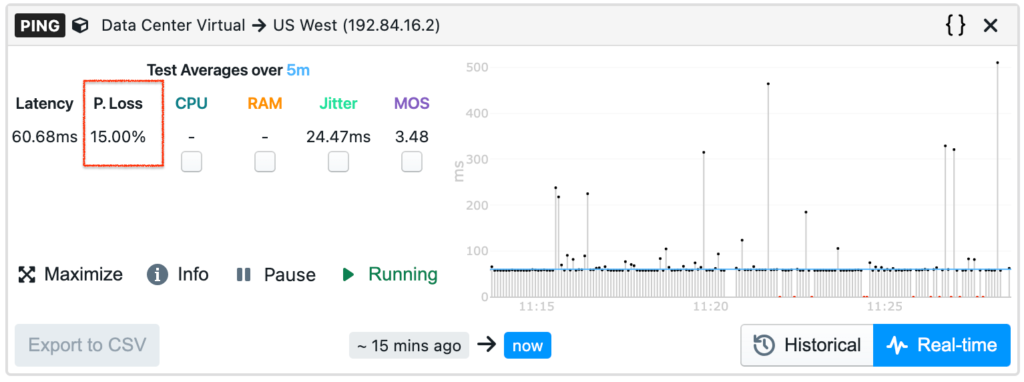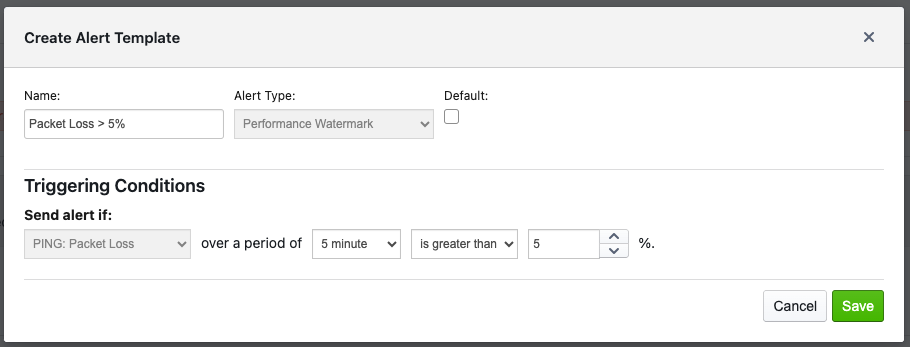Effective SLA Monitoring: Ensuring Service Level Agreement Compliance
Understanding SLA Monitoring
What is SLA Monitoring?
Service Level Agreement (SLA) Monitoring verifies that one or more services meet the performance requirements defined. These SLA performance requirements are defined via metrics and targets that are included in a Service Level Agreement. In the end, an SLA is a performance contract between a service provider and a subscriber. Two parties set service level objectives to ensure the service provider understands how to meet the customer’s expectations. SLA breaches occur each time a service provider doesn’t satisfy the service levels set.
Importance and Benefits of SLA Monitoring
SLA monitoring enables service providers and subscribers to enforce service availability and performance so that customer satisfaction is ensured. There are several reasons why SLA performance monitoring is important:
- Accountability – SLA monitoring ensures the service provider meets the customer’s standards set before the service agreement. This is particularly important for annual or multi-year contracts where the customer is locked in until its term.
- Performance measurement – Continuous checks and reports on service delivery performance help service providers to identify underperforming areas. This continuous audit enables the provider to work on improvements, maximizing service delivery and performance.
- Proactive monitoring – SLA monitoring enables quick issue detection, allowing for proactive management and resolution before they impact the customer. Proactive monitoring enables service providers to limit unexpected downtime that will impact customer support and satisfaction.
- Trust and transparency – Many service providers offer a status dashboard that makes it easy to verify availability and performance. These dashboards and/or reports are generally the output of SLA monitoring tools that the provider is using.
Risks of Inadequate SLA Monitoring
Conversely, a service provider with subpar SLA monitoring risks undermining overall business performance. Here are some of the risks of inadequate monitoring:
- Network downtime and service interruptions – Without SLA monitoring, network outages and performance issues are left to the customers to report. This reduces the overall uptime and service continuity.
- Financial penalties – When a service provider doesn’t meet the SLA defined, is liable for service credits and repair costs. These penalties will impact the bottom line and financial performance of the business.
- Decreased customer satisfaction – A service provider that fails to meet or exceed defined goals and objectives will inevitably frustrate customers. Frustration leads to customer churn and reduction in contract renewal rates.
- Damage to business reputation – Frustrated customers who cancel a service may damage the business reputation. This often leads to more revenue losses due to negative word of mouth.
Best Practices for Effective SLA Monitoring
A service provider that implements an effective SLA monitoring will need to follow best practices that will allow it to meet customer expectations. By following these simple steps, a service provider can meet its business goals as it will ensure proper SLA management and performance.
Establishing Clear SLA Metrics and Objectives
First of all, it’s important to define clear SLA metrics that satisfy the customer objectives. These metrics capture the key performance indicators of the customer’s requirements and quality of service expectations. During this phase, the service provider staff may need to meet with the customer to set service level objectives of the services that are key to the customer’s business. Important to say that the metrics are easily and accurately measurable and that both parties agree on the methods of monitoring and reporting against these metrics.
Example of SLA metrics
We reports some common metrics included in most SLA:
- Uptime/Availability: Percentage of time the service is operational in a given time frame.
- Incident Response Time: Time taken to acknowledge a service request or incident.
- Resolution Time: Time taken to resolve a service request or incident.
- Mean Time to Repair (MTTR): Average time taken to repair a service failure.
Other network performance metrics of interest include latency, packet loss, throughput, and more.
Implementing Robust Monitoring Tools
The SLA monitoring software plays a crucial role in executing the SLA monitoring strategy effectively. Here are three important requirements that should be considered when selecting a robust network monitoring tool:
- High availability: High availability is vital for SLA monitoring tools to ensure continuous, reliable operation, minimizing downtime through failover mechanisms and redundancy. Together, these features ensure consistent SLA tracking and reporting, helping organizations meet their commitments and maintain high service standards.
- Real-time data: A real-time network monitoring system minimizes the time that it takes for an event, or measurement, to be reported to the operator for alertings, and reporting. Such a SLA monitoring system provides the high definition of the service monitored, allowing the service provider to be more proactive with unplanned downtime.
- Threshold alerts and notifications: Threshold alerts and notifications activate when performance metrics approach or fall below set thresholds, allowing for proactive issue management. This real-time awareness helps prevent SLA breaches, minimize downtime, and ensure high service reliability and customer satisfaction.
Ensuring Customer Communication with Reports and Service Status Dashboards
To ensure effective customer communication, many service providers provide periodic reports about the status and performance of the services offered as well as service status dashboards. Periodic reports are used to verify that the service offered met the contractual agreement, and include any financial penalties caused by SLA breaches. Service status dashboards provide a real-time snapshot of the services to both the provider and the customer. Both elements are part of a proactive communication that helps manage expectations, reduces uncertainty, and builds confidence in the service provider’s commitment to meeting SLA targets. By offering clear and simple reports and accessible service status dashboards, service providers can enhance customer satisfaction and foster a transparent, reliable relationship.
Common Challenges in SLA Monitoring
There are many challenges that present to organizations that are looking to monitor and set service level objectives. Below are some of the most common problem areas:
- Inaccurate data: Ensuring the accuracy and reliability of the data collected for SLA monitoring can be difficult, especially when integrating data from various sources and systems, which can lead to inconsistencies and errors.
- Ambiguous metrics: Creating clear, quantifiable metrics that accurately reflect service performance is challenging. The more complex the service that is rendered by a provider, and the more detailed and specific needs to be the definition of the SLA metrics that will be monitored.
- Alert fatigue: Difficulty in setting appropriate thresholds could lead to excessive alerts that are difficult to prioritize. This situation can lead to alert fatigue, where important notifications may be ignored by the service provider.
- Tool integration: Integrating SLA monitoring tools with existing IT infrastructure and systems can pose compatibility issues. Ensuring the tools can scale with the growth of the business and service demand.
NetBeez as Streamlined SLA Monitoring Solution
Leveraging NetBeez for streamlined SLA monitoring offers several advantages in enhancing service level management and performance tracking. NetBeez provides real-time monitoring into network and application performance through active monitoring agents deployed across the infrastructure. These monitoring agents enable service assurance as well as proactive identification of potential issues before they impact service delivery, ensuring minimal downtime and SLA compliance.
SLA Metrics
NetBeez supports comprehensive metrics collection, including latency, packet loss, and throughput, facilitating accurate reporting and analysis. The data reported by the network agents is sent in real-time to the dashboard for immediate visualization and alerting. Should an SLA violation occur, NetBeez can send a notification to the service provider’s on-call team for quick resolution.

Threshold Alerts
NetBeez offers a simple yet powerful way to define and enforce service level agreements. Thanks to user-defined alert profiles, it is possible to address critical issues promptly, enhancing overall service reliability and customer satisfaction. For instance, the user can create an alert that triggers when the packet loss is greater than 5%. The service desk team can receive a notification via email as a result of this alert, streamline SLA monitoring processes.

Service Status Dashboards
NetBeez supports a JSON-based API that allows service providers to build custom service status dashboards. This helps maintain high service standards consistently. This helps streamline SLA monitoring processes, enabling customers to see in real-time the status of the services.

Conclusion
In conclusion, SLA monitoring is crucial for maintaining high service standards and ensuring customer satisfaction. It holds service providers accountable, enables proactive issue management, and provides transparency through service status dashboards and reports. However, inadequate monitoring can lead to network downtime, decreased customer satisfaction, financial penalties, and reputational damage.
By following best practices, such as establishing clear metrics, implementing robust monitoring tools, and ensuring effective communication, service providers can meet and exceed their SLA targets. Leveraging solutions like NetBeez can further enhance SLA monitoring, providing real-time insights, threshold alerts, and customizable dashboards to optimize performance and reliability.

Get your free trial now
Monitor your network from the user perspective
